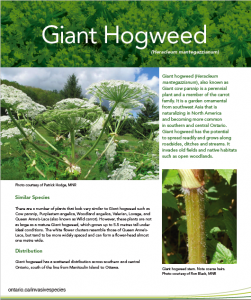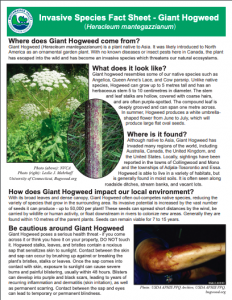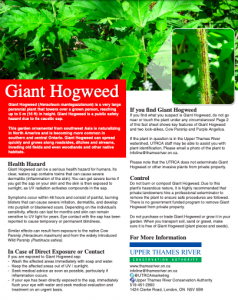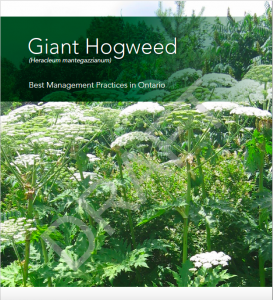Giant Hogweed (Heracleum mantegazzianum)
French common name: Berce du Caucase
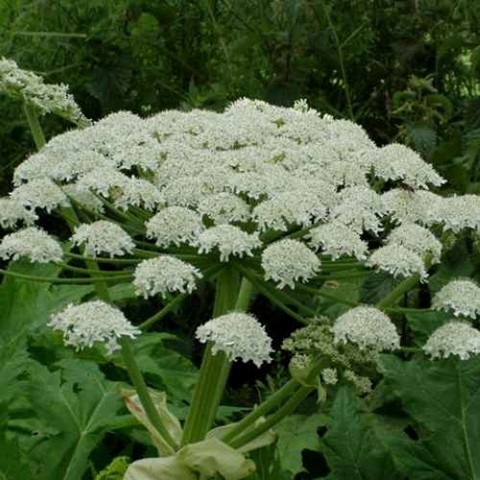
Giant hogweed has a phototoxic sap that, when exposed to light, can cause severe burns on the skin.
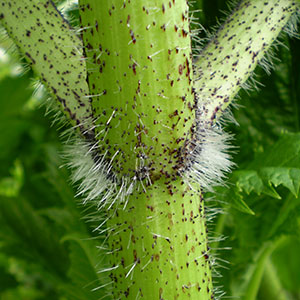
Giant hogweed's stem can range from 10-15 cm in diameter with course hairs.
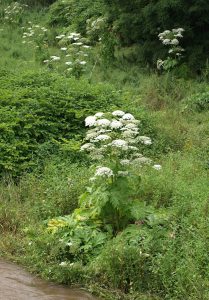
Gian hogweed can grow near roads and trails.
Order: Apiales
Family: Apiaceae
Did you know? This species can reach heights of 3 m (10 ft).
Giant hogweed is a member of the carrot family and its resemblance to Queen Anne’s lace caused it to become a garden ornamental. It spreads easily and can establish along roadsides, ditches, and streams. Giant hogweed has a thick bright green stem (3-8 cm in diameter) with dark reddish-purple spots and coarse white hairs at the base of the leaf stock. The plant can be 2-5.5 m tall with broad leaves that are deeply-lobed and serrated. From late spring to mid-summer, giant hogweed produces a large upside-down umbrella-shaped head, up to 80 cm across, with clusters of tiny white flowers. Giant hogweed has a phototoxic sap that, when exposed to light, can cause severe burns on human skin. Removing hogweed can be dangerous because of this sap; it should also not be burned or composted for this reason. The easiest way to remove giant hogweed is to pull it when it is still very young and small and store all plant components in sealed black garbage bags until the plant is dried and seeds are no longer viable. Do not plant giant hogweed in gardens and report any sightings.
Height: Giant hogweed can grow up to 5.5 m (18 ft) in ideal conditions, however, such sizes are rare. The plant typically grows 3-5 m (10-16 ft) in Ontario.
Leaves: Leaves are notably spiked with a jagged appearance.
Stem: Can range from 10-15 cm in diameter with course hairs. The stem can either be completely covered in purple or purple spots.
Flowers: The flowers are whitish in colour and appear in mid-June. The flowers are clustered in umbel-shaped heads and can measure up to 1 m across.
Biology: Seeds may take several years to germinate and are viable in the soil for up to 15 years. During the first year, the plant produces a rosette of leaves up to 1 m high. After 2-5 years, the plant produces flowers. As giant hogweed grows, a large root, thick hollow stems, and large lobed leaves are formed. The stems of the plant are covered with reddish-purple flecks and stiff hairs filled with sap. Sap may also collect in the hollow stem bases. Giant hogweed flowers once in its lifetime, unless the flower clusters are damaged before opening. Once the plant produces seeds it dies. Each plant can produce up to 120,000 winged seeds (typically 50,000). Seeds dropped in streams can float for three days. They can move long distances via water in ditches and streams. Seeds can also be spread up to 10 m by wind.
Giant hogweed has spread across Canada, with populations recorded in Atlantic Canada, Ontario, Quebec, and British Columbia. It often invades along roadsides, in ditches, on riverbanks, fields, and open woodlands.
Giant hogweed has a scattered distribution across southern and central Ontario, south of the line from Manitoulin Island to Ottawa. Confirmed reports of giant hogweed have been made as far north as Kapuskasing. Many counties and municipalities are taking steps to remove giant hogweed from their communities. Established populations with the greatest potential to spread are mostly found south of the line between Ottawa and Parry Sound.
Natural resource impacts
There is evidence that giant hogweed can harm Ontario’s biodiversity by shading out native plants, although scientists have not done extensive research on this topic in Ontario or Canada. Established populations of giant hogweed can outcompete native vegetation through rapid growth in the early spring, producing large leaves which shade out other plants before they have an opportunity to grow. This creates stands of low species diversity, typically inhabited by only the hardiest of native grasses and other invasive species such as garlic mustard (Alliara petiolata). Giant hogweed can form dense stands in riparian areas. When the plants die back in the fall, soil is exposed, resulting in increased erosion and siltation of stream banks which can impact fish spawning areas.
Health concerns
The clear watery sap of giant hogweed contains toxins that can cause severe dermatitis (inflammation of the skin). Ultraviolet radiation activates compounds in the sap, resulting in severe burns when exposed to the sun. Symptoms occur within 48 hours and consist of painful blisters. Purplish scars may form that can last for many years. Eye contact with the sap has been reported (in the media and by various web sites) to cause temporary or permanent blindness, though this has not been confirmed. Similar effects result from exposure to the other two cow parsnip species found in Ontario (H. maximum and H. sphondylium) and from the widely introduced wild parsnip (Pastinaca sativa).
Agriculture concerns
Impacts of giant hogweed on agriculture are rare, however, populations have been documented as creeping into agricultural fields and requiring additional management practices from growers to minimize impacts on crop yield. Giant hogweed in pasture and forage fields reduces feed quality and increases health risks to more susceptible grazing animals (Ontario, 2018).
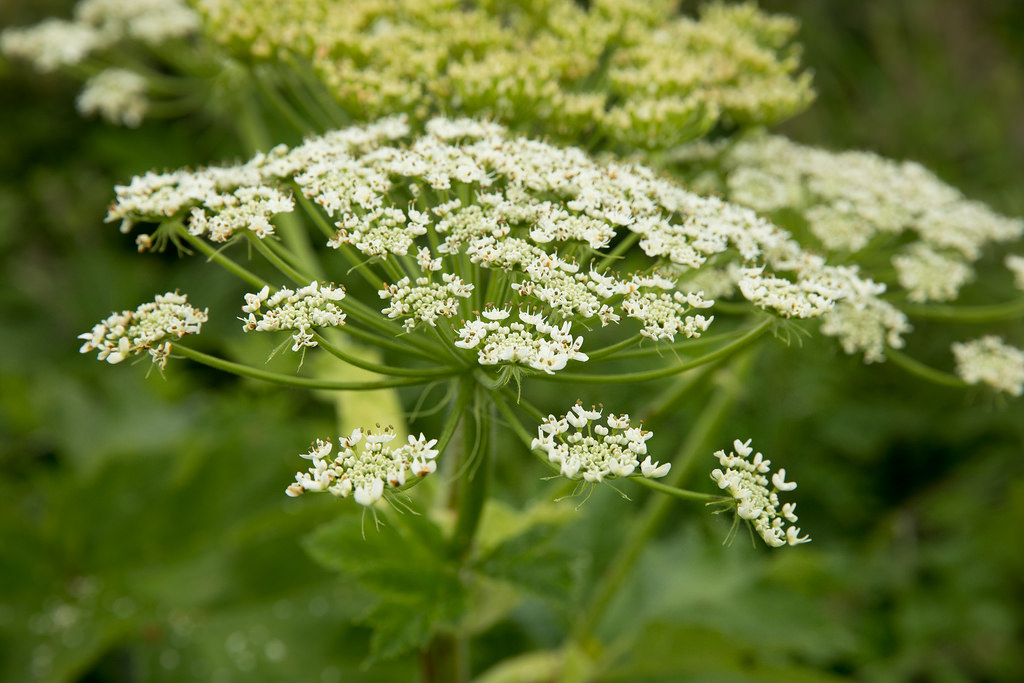 Native Cow Parsnip Native Cow Parsnip |
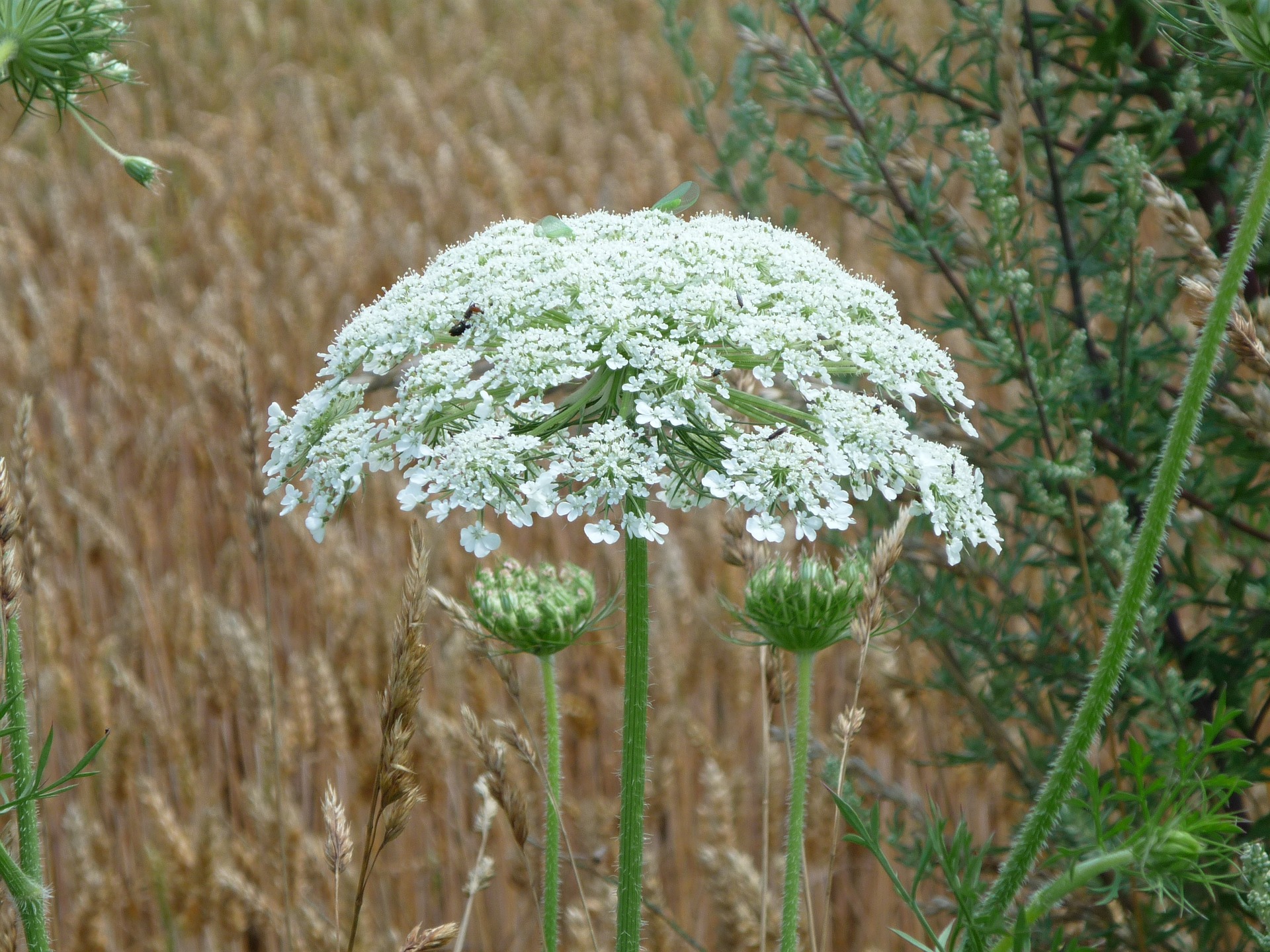 Giant Hogweed Giant Hogweed |
Technical Bulletins
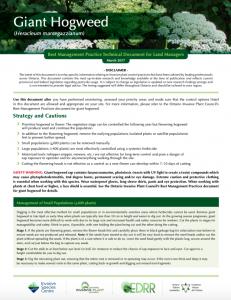
In 2017, the Early Detection & Rapid Response Network worked with leading invasive plant control professionals across Ontario to create a series of technical bulletins to help supplement the Ontario Invasive Plant Council’s Best Management Practices series.
*Please note: the Invasive Plant Technical Bulletin Series is currently undergoing some updates and will be reposted when the process has been completed. Please visit the Ontario Invasive Plant Council website for updates.
Fact Sheets
Best Management Practices
These Best Management Practices (BMPs) are designed to provide guidance for managing invasive Giant Hogweed (Heracleum mantegazzianum) in Ontario. They were developed by the Ontario Invasive Plant Council (OIPC), its partners and the Ontario Ministry of Natural Resources (OMNR and Ontario Ministry of Agriculture, Food and Rural Affairs (OMAFRA). These guidelines were created to complement the invasive plant control initiatives of organizations and individuals concerned with the protection of biodiversity, agricultural lands, crops and natural lands
Research
Giant hogweed dermatitis
Characterization of Bacillus subtilis HC8, a novel plant‐beneficial endophytic strain from giant hogweed
Petersburg, Russia. Based on a screening for various traits, including plant‐beneficial
properties and DNA fragment patterns, potential siblings were removed. The remaining …
Long-term effects of sheep grazing on giant hogweed (Heracleum mantegazzianum)
mantegazzianum) was grazed by sheep in the years 1987–1993. After two years Giant
Hogweed cover was much reduced and a typical meadow vegetation was established. By …
[PDF] The Giant Hogweed Best Practice Manual. Guidelines for the management and control of an invasive weed in Europe
on from the problems caused by such invasive weeds in most other continents, Europe too is now beset by alien species that are having severe negative impacts on a variety of …
Testing the effects of data resolution and image classification approach on the detection of a model plant species Heracleum mantegazzianum (giant hogweed)
Giant hogweed (Heracleum mantegazzianum): its spread and control with glyphosate in amenity areas.
Current Research and Knowledge Gaps
Lorem ipsum dolor sit amet, consectetur adipiscing elit. Ut elit tellus, luctus nec ullamcorper mattis, pulvinar dapibus leo.
Further Reading
The Invasive Species Centre aims to connect stakeholders. The following information below link to resources that have been created by external organizations.

